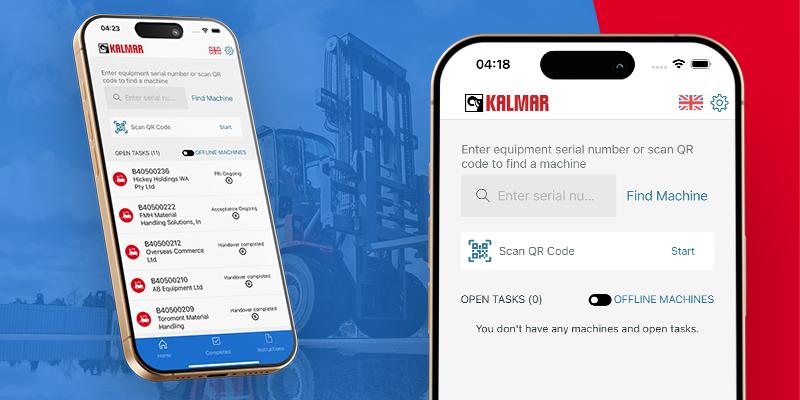- Services
- App development
- Custom mobile app development
Custom mobile app development: Strategies for success in a mobile-first world

Trusted by startups and enterprises:
Got a vision for the next big app, but the actual building part feels… impossible? We get it.
But if you're a startup founder or product owner, you're probably also realizing how much… stuff you have to figure out. Are you spending hours reading about code and still not getting it?
The good news? It doesn't have to be that hard. We're gonna break down the whole process, step by step, without all the unnecessary complexity
Key takeaways for leaders
- Maximize your app's return: Right tech + Clear goals = High ROI. We'll show you how to estimate and maximize that ROI.
- Risk mitigation is critical: We'll guide you on minimizing the risk of investing in the wrong technology by using lean methodology, user testing, and data-driven decision making.
- User experience drives results: A seamless user experience is non-negotiable. We'll share strategies for creating intuitive interfaces that drive engagement and conversion.
- The right partner matters: Choosing a reliable mobile app development agency is crucial. We'll demonstrate how strategic partnerships deliver measurable business results.
So grab a cup of coffee, sit back, and let us show you the way to your project’s success.
How to successfully launch and market your mobile app
Not all mobile app development journeys are created equal. The difference between a costly experiment and a strategic business asset is rarely about the technology - it's about the approach.
The challenge lies in finding the right balance. Many organizations either overinvest in technically complex solutions without clear business alignment or underinvest, leading to costly rebuilds later.
In today's mobile-first world, this balance is crucial for achieving measurable business outcomes through strategic custom mobile app development.
The Lean approach to mobile development
Just as Donald Rumsfeld famously categorized knowledge into "known knowns," "known unknowns," and "unknown unknowns," mobile app development exists on a similar spectrum of certainty.
Traditional development methodologies work perfectly when requirements are stable and outcomes predictable.
But what happens when you're building something new, entering uncharted territory where user behavior and market fit aren't guaranteed?
Consider our work with Mendy, a startup that imagined a platform connecting homeowners with remote handyman services. Their initial hypothesis seemed straightforward:
"Would people pay for handyman services available through their phones?"
Rather than building a complete product based on assumptions, we applied Lean Startup methodology:
- We quickly built a simple version of the app for testing
- Discovered users didn't want to download an app and investors preferred B2B models
- Pivoted to a web version for property companies
- Secured pilot programs with major housing providers
The result?
Instead of spending the entire budget on an untested vision, we moved through multiple build-measure-learn cycles, adapting to real-world feedback and eventually finding product-market fit.
The question becomes: What type of app development are you facing?
Is it more like our Cargotec Kalmar project - with clearly defined requirements and proven processes - or is it closer to Mendy, where hypotheses need testing and validation?
Because in our experience, the most successful mobile initiatives aren't necessarily those with the largest budgets or most advanced features - they're the ones built on the right foundation for their unique business context.
For decision-makers navigating this landscape, the challenge isn't whether to invest in mobile app development, but rather how to approach it strategically. With multiple development methodologies, evolving technology stacks, and varying business objectives, finding the right path requires both technical acumen and business insight.

We'll explore the various approaches to mobile app development, their respective advantages, and strategic considerations for implementation.
Our goal?
To equip you with actionable insights that align technical decisions with your business objectives, requirements, and constraints.
So, let’s get started.
Native vs. Cross-platform vs. Hybrid: Which app development approach is right for your project?
The most common mistake in mobile app development? Building first, asking "why?" later. Define your business requirements before you write a single line of code.
At ZenDev, we approach each client partnership by first understanding your business context, not by pushing a preferred technology stack. Your development approach should align with your business constraints, audience needs, and the level of certainty about your requirements - not the other way around.
Let's explore the four primary approaches to mobile app development, their strategic advantages, and when each delivers maximum value:
Native app development: Maximum performance and control
If you are choosing between native development versus cross platform mobile app development, there are many considerations to think about.
Native apps are built specifically for a single platform using the programming languages and development tools designated by that platform's creator. For iOS, this means Swift or Objective-C, while Android development typically leverages Java or Kotlin.
Advantages:
- Optimal performance and responsiveness
- Full access to device features and capabilities
- Enhanced user experience aligned with platform conventions
- Better discoverability through app stores
- Stronger security protections
Considerations:
- Higher mobile app development cost for multi-platform presence
- Separate codebases require more maintenance
- Longer development timelines
- Need for platform-specific expertise
Native development remains the gold standard for apps where performance is paramount, deep integration with device features is necessary, or user experience cannot be compromised.
Expert insight: While native development provides unparalleled control, it also doubles your workload if you're targeting both iOS and Android. One of the biggest challenges we've faced on native projects is maintaining feature parity across both platforms, which requires meticulous planning and coordination.
Gaming apps, complex financial applications, and tools requiring sophisticated hardware interactions often benefit most from this approach.
Cross-platform development: The efficiency-performance balance
Cross-platform frameworks like React Native, Flutter, and Xamarin allow developers to write code once and deploy across multiple platforms. These solutions compile to near-native code, striking a balance between development efficiency and performance.
Advantages:
- Single codebase for multiple platforms (typically 60-90% code reuse)
- Faster development cycles compared to pure native approaches
- Reduced development and maintenance costs
- Consistent look and feel across platforms
- Access to most native device features
Considerations:
- Some performance compromises compared to fully native apps
- Occasional limitations with advanced platform-specific features
- Dependency on framework updates and support
- Potential challenges with complex UI animations
As one of our senior engineers puts it:
"Back in the day, we had to write separate codebases for iOS in Objective-C and Android in Java. Each platform had its own quirks, performance bottlenecks, and debugging nightmares. You'd fix something on one platform only to break something on the other."
This historical pain point remains relevant because it highlights what cross-platform development solves well.
However, there are still some challenges.
Expert insight: Cross-platform offers a balanced approach for business applications where efficiency and budget are key. However, keeping up with native updates can be tricky, and debugging across different devices can still be a headache. While frameworks handle a lot, you might still need native code for certain features or to really optimize performance for specific devices.
At ZenDev, we've found React Native effective for delivering high-quality applications efficiently, leveraging web technologies with good performance and access to platform features. For most business applications, users won't notice the performance difference compared to native apps, and the development benefits are significant.
.
What if you could launch your app on both iOS and Android in 40% less time? That's the practical reality we've delivered for clients using React Native.
In practice: For Familjehem Göteborg, we created a React Native mobile application that transformed how the social services agency communicates with foster families. The cross-platform approach allowed us to deliver both iOS and Android versions within tight budget constraints, while still providing essential native features like secure authentication through BankID.
Hybrid app development: Web technologies in app form
Hybrid apps are essentially web applications packaged within a native container. Built using HTML, CSS, and JavaScript, these apps run within a WebView and use bridges like Apache Cordova to access device capabilities.
Advantages:
- Unified web technology stack
- Extreme portability across platforms
- Lower initial development costs
- Leverage existing web development skills
- Simpler updates (often without requiring app store approval)
Considerations:
- Noticeable performance limitations, especially for complex interfaces
- Less responsive user experience compared to native or cross-platform
- Limited access to native device features
- Potential challenges with offline functionality
Expert insight: Hybrid approaches are best suited for simpler applications where performance isn't a primary concern. For instance, a basic content-displaying app for a small business could be effectively built as a hybrid app. One challenge we've encountered is the limitations in accessing certain device hardware, such as advanced camera features.
Hybrid approaches work best for content-focused applications with minimal interactive elements, internal business tools where performance isn't critical, or as minimum viable products to validate ideas before more substantial investment.
In short, think of hybrid apps as a "good enough" solution for certain niche cases, but carefully consider whether the potential cost savings are worth the trade-offs in performance and user experience. If performance is a key concern and you're unsure about the right approach, get in touch - we can help you weigh the options.
It's a balancing act, and it's important to go in with your eyes wide open. For higher performance or long-term, consider front end developers already on staff, if it isn't too much consider React Native and/or Next.js.
Progressive web apps: The browser-based alternative
Progressive Web Apps (PWAs) are web applications that use the latest browser features to work like apps, but you don't need to install them.
Advantages:
- No app store submissions or approvals
- Instant updates without user action
- Reduced friction in adoption (no download required)
- Cross-platform by default
- Shared development with web presence
Considerations:
- Limited access to device hardware and features
- Varying support across browsers and platforms
- Less integration with platform ecosystems
- Typically less discoverable than app store listings
- Challenges with persistent engagement
Expert insight: PWAs shine for businesses that want to offer a quick and easy mobile experience without the commitment of a full app installation.
News sites, blogs, and simple e-commerce sites can all benefit from a PWA approach. However, remember that PWAs may not be ideal if you need deep integration with device features or strong offline capabilities.
PWAs offer compelling advantages for content-heavy applications, services focused on occasional rather than persistent use, or as complementary channels to native applications.
In the end, the mobile landscape isn't about finding the "best" technology - it's about finding the right match for your specific situation.
Mobile app development process: From idea to launch (and beyond)
Building an app isn't magic. Break it down into steps and you've got a roadmap anyone can follow. Here's how we approach building apps that actually deliver results:
1. Discovery and strategy
Building an app without strategy is like driving without a destination. You'll end up somewhere, but probably not where you wanted to go.
Every successful app begins with clarity on what you're trying to accomplish. During discovery, we dig into questions like what problem your app actually solves, who'll really use it, and what your competitors are doing.
It's easy to get carried away during this phase, dreaming up endless features and possibilities. But it's really important to stick to your app's core purpose. Forget about unnecessary add-ons or "nice-to-haves" that deviate from the primary function. Each extra feature adds complexity, cost, and development time.
This initial investment pays off big time. A week of proper planning can save months of expensive development detours later on.
You'd be surprised how many clients come to us after blowing their budget on an app that doesn't address their actual business needs.
2. Establish your Minimum Viable Product (MVP)
The biggest mistake we see? Companies trying to build everything at once. That's a recipe for wasted time and money.
Instead, we focus on building a Minimum Viable Product first - the simplest version of your app that delivers real value to users. This approach lets you:
- Test your core idea with real users quickly
- Save money by validating assumptions before full investment
- Get to market faster and start learning from actual usage
- Provide a foundation for intelligent iteration
Our approach to MVPs isn't theoretical - it's battle-tested through our own product launches like Linkbound.
Instead of building a complete LinkedIn sales tool at once, we created a simple Chrome extension that validated our core hypothesis in just 3 weeks, then iterated based on actual user behavior until we reached $20K ARR shortly after launch.
As our CEO Senad puts it:
"I didn't want to be another agency promising to help build successful products without ever having built one ourselves."
Visit our blog for an in-depth guide to our MVP methodology, and learn how we use rapid build-measure-learn cycles to adapt to user feedback and find product-market fit.
Ready to validate your app idea with an MVP? Let's chat about how to get started.
Remember: your first version shouldn't be perfect - it should be good enough to start the conversation with your users.
3. UX/UI design
Mobile screens are small, attention spans are shorter, and user expectations are higher than ever. Good design isn't a luxury - it's essential.
The mobile app design process is another crucial part you can't skimp on. Start thinking about how your app will look and feel. We typically begin with sketches and wireframes to map out how the app will work.
- Create a storyboard or roadmap to demonstrate connections between each screen.
- Think about the differences in how people will use your app compared to a mobile website (app development and web development are not the same).
- User experience must be your top priority.
Remember that mobile apps and websites are different beasts entirely. People use them differently, expect different things, and have different tolerance levels for complexity.
4. Development
Now it's time to actually create the app - building the back-end technology, APIs, and front-end components.
Depending on your approach, you might need two separate versions - one for iOS and one for Android. Or you might use cross-platform tools to build once for both. Each has tradeoffs in terms of performance, cost, and maintenance.
This process looks different for everyone. Some apps can be built in a month with a single developer. Others take six months with a team. The complexity of features drives both timeline and budget - a simple content app is quick and affordable, while something with user authentication, location features, and real-time communication obviously takes longer.
- Choose your development method (native, cross-platform, hybrid).
- Assemble your development team with the right expertise.
- Establish a timeline with realistic milestones.
- Be ready to adapt as you learn more during the process.
We work in sprints so you see regular progress, catch problems early with continuous integration, and build in security from the beginning.

5. QA
No app is perfect, but yours shouldn't crash on launch day. Testing isn't something you tack on at the end - it should happen throughout development.
Before your app goes live, you need to make sure it actually works. App testing is when you'll find bugs, glitches, and issues that need cleaning up before real users see them.
- Test across different devices and screen sizes - what works on your iPhone might break on budget Android
- Run user tests to gather feedback on both functionality and experience
- Don't aim for perfection - aim for "good enough to ship" with plans to improve
The purpose isn't perfection - it's delivering a functional app that works without crashing. You can always update later (and you will), but trying to make it flawless during testing means you might never launch at all.
6. Deployment and launch
Getting an app into stores isn't just hitting "upload" - there's a whole process involved.
You'll need to optimize your app store listings so people can find you, manage beta testing to catch any last-minute issues, and coordinate with marketing so people know your app exists when it launches.
- Create compelling app store listings that convert browsers to downloaders.
- Set up analytics to track what actually matters.
- Plan for a phased rollout to catch problems before they affect everyone.
7. Maintenance and evolution
Launch day isn't the finish line - it's the starting gun for the real race.
The app landscape changes constantly. New OS versions, device types, and user expectations mean your app needs regular attention. Plan for ongoing monitoring, updates, and feature additions based on real user feedback.
- Track performance and user engagement metrics
- Gather and prioritize feedback for future updates
- Plan for at least quarterly maintenance releases
Too many companies treat apps as "one and done" projects, then wonder why usage drops off a cliff after six months.
Your first version isn't your final version - it's just where things start getting interesting.
Building an app that delivers real business results isn't about following the latest trends or cramming in features. It's about understanding what your users need, building it well, and iterating based on real-world feedback. Skip any of these steps at your peril.
App monetization strategies
So you've built an app that people actually want to use. Great job!
Now comes the part many developers gloss over - figuring out how to make money from it.
Your monetization strategy isn't something you bolt on at the end. It should influence your app's design from the start.
Here's a breakdown of your options:
Freemium: The gateway approach
Freemium is pretty straightforward - give away a basic version for free, then charge for the good stuff.
This model works well when your basic version delivers real value while still leaving users wanting more. The trick is finding that sweet spot - too generous and nobody upgrades, too stingy and you'll face a revolt in your app reviews.
- Users get to "try before they buy" which lowers acquisition barriers.
- Your free users become marketing for your paid features.
- You need a clear value ladder between free and paid features.
Spotify nailed this. Their free version has ads and limited mobile features, but it's good enough that people stick around until they're ready to pay. The jump to premium feels worth it when you're already invested in the platform.
In-app purchases: The micro-transaction game
This is where you sell virtual goods or unlocks within your app. Gaming apps dominate this model, but it works elsewhere too.
The beauty of in-app purchases is flexibility - users only pay for what they value, and you can introduce new purchasable items over time. But there's a fine line between offering valuable extras and becoming predatory.
- Can generate higher revenue per user than other models.
- Works best when purchases enhance experience without feeling required.
- Ethics matter - targeting kids or exploiting addictive behaviors will backfire.
Candy Crush makes millions selling extra lives and boosters. But notice they still make the base game perfectly playable without spending a dime - purchases just reduce friction, they don't gate progress entirely.
Subscriptions: The recurring revenue dream
The holy grail of app monetization - predictable, recurring revenue through subscriptions. If your app provides ongoing value, this model makes sense.
- Creates predictable revenue that grows over time.
- Makes planning and budgeting much easier.
- Requires constant content or feature updates to justify ongoing payments.
Our own platform Linkbound uses this model. A subscription model makes sense if your app provides ongoing value.
Paid app: The upfront model
The simplest approach - charge money to download your app. This was popular in the early app store days but has become increasingly difficult to pull off.
- Clean business model with no compromises to user experience
- Each sale is 100% complete - no need to convert free users
- Significantly harder to acquire users in today's "free-first" marketplace
This works best for specialized professional tools or when you have a strong brand. Things like Procreate or niche productivity apps can still succeed with this model.
Strategic pricing considerations
Getting your pricing right isn't just about picking a number that sounds good. It requires strategic thinking:
- Competitive pricing: Research similar apps to set a reasonable price - but don't automatically undercut competitors. Sometimes positioning as premium is better.
- Discounts and promotions: Offer introductory rates or bundle deals to reduce friction for first-time buyers.
- Currency localization: Adjust pricing based on regional economic factors - what seems cheap in Norway might be prohibitively expensive in Brazil.
Finding your fit
The truth is, most successful apps use hybrid approaches. Maybe you start freemium but add subscriptions for power users. Or you combine a base subscription with premium in-app purchases.
When advising clients, we typically recommend starting simpler than you think. Launch with a single, clear monetization strategy, then expand based on actual user behavior rather than assumptions. Monetization can be tricky – need help finding the right fit for your app? Contact us for a consultation.
What matters is alignment - your monetization should match your users' perception of value. The moment these fall out of sync is when you'll see poor conversion and rising churn.
Testing different price points often yields surprising results. We've seen apps double revenue by slightly lowering prices and capturing more volume. Others found they were severely undercharging for premium features.
Whatever approach you choose, build analytics that tell you the truth about what's working. Revenue is the ultimate metric, but also you need to track conversion rates, retention within payment flows, and feature usage patterns among paying vs. non-paying users.
How much does mobile app development cost?
"How much will it cost to build an app?" is probably the most common question clients ask.
While the honest answer is always "it depends," here's a clear breakdown of what actually impacts app development costs.
What drives your budget
App development isn't priced like off-the-shelf software. Several key factors influence the final investment required:
- App complexity level (Simple calculator vs. full social network)
- Development approach selected (Native, cross-platform, hybrid, or PWA)
- Platform requirements (iOS, Android, or both)
- Design complexity (Basic templates vs. custom-crafted experiences)
- Feature requirements (User accounts, payments, maps, etc.)
- Development team structure (Freelancers, agency, in-house team)
- Team location (Regional cost of labor variations)
Actual market rates
Quality mobile development requires appropriate investment. Here's what clients can realistically expect at different complexity levels:
Hidden cost components
That first build? It's just part of the whole cost. You gotta think about the other stuff too, like:
- Design: $5-20K+ (depending on complexity)
- Project management: Additional 10-20% of development costs
- Testing: Another 10-20% (critical for quality assurance)
- App Store fees: $99/year for Apple, $25 one-time for Google
- Marketing: Minimum $5K+ for initial user acquisition
- Maintenance: 10-20% of initial development cost annually
Too many projects face challenges because these ongoing costs weren't factored into initial planning. Mobile applications require continuous attention rather than a "build once" approach.
Platform choice
The development approach chosen significantly impacts both investment required and capabilities delivered:
Choosing a development platform based solely on initial cost can lead to problems down the road. For example, a banking app as a PWA may seem cheaper initially, but could create security vulnerabilities. Similarly, building a simple content app with native code is often overkill.
The most effective approach balances upfront costs with long-term strategic goals. Investing wisely at the beginning helps avoid expensive rework later.
Partnering with someone experienced in similar projects will help estimate the costs and guide you through these choices objectively – recommending more cost-effective solutions that still meet your needs. [Contacting the right development partner is key to this estimate]
Transforming businesses through mobile innovation
So, mobile apps. Everyone's got one, right?
But how many are actually making a difference?
At ZenDev, we think it's about more than just writing code – it's about figuring out how tech can really help a business.
We start by understanding what you're trying to achieve. It sounds obvious, but you'd be surprised how many dev shops skip this part!
We wanna know what success looks like to you, before we write a single line of code. And yes, we can challenge your thought process.
Here are a few examples where we've made a real difference:
Cargotec Kalmar
Kalmar (big name in cargo handling) had a problem: their commissioning process was a nightmare of paperwork. Information about machine delivery issues, assembly problems, warranty starts – it was all over the place, and no one could see the big picture. Technicians and sales reps were drowning in forms.
We built them a mobile app – they call it the Perfect Delivery Tool (PDT). It basically took all that paperwork and put it on phones and tablets. The PDT gives technicians guidance on inspecting and assembling machines correctly. They can use inspection checklists (PRI - Product Receipt Inspection) and report any problems they find. There's also a handover checklist for a smooth product handover, plus a digital acceptance certificate.
The result? Operations are supposedly 103% more efficient. The important thing is that quality control has improved. Customers aren't getting stuck with faults. And warranty and invoicing is much easier. They can use visual documentation and directly collect all metadata for any analysis.
Tech details: It's a cross-platform app built with React Native. It connects to Kalmar's existing systems and works offline, which is crucial when you're out in the field with spotty connectivity. Technicians and sales reps access it using special Google or Salesforce accounts provided by Kalmar.

Manufacturing helper app
So, this industrial tooling manufacturer needed a better way to get product info to their customers. Picture this: someone's on a manufacturing floor, needs specs fast, and doesn't wanna flip through a bunch of catalogs.
We've taken over their mobile assistant app, which lets users scan QR codes on physical products to get all the critical information they need - cutting data, machining conditions, tool wear metrics, and product comparisons. It's like having a technical expert in your pocket.
The result? Field technicians and manufacturing personnel now access critical product information in seconds instead of minutes. The client reports increased product adoption rates as users better understand optimal tool usage.
Tech details: It's native iOS and Android development, and our mobile team works directly with their product team. We're talking product lead, project manager, backend developer, UX designer – everyone's collaborating to keep things aligned with their overall plan. And this is even better, because we are getting trusted with the client's mobile app (it is like one of their core products), which means more responsibility and even more good things for us.
Multi-service project
This client needed more than just another app, you know?
They were looking for a full-on system for their customers, something that could handle temperature stuff, manage tasks, and track employee time.
So, we kinda built the whole thing from scratch.
Two apps, actually.
One's a cross-platform mobile app (works on both iPhones and Androids), and the other's a web-based admin panel. Underneath all that, there are two backend/API things and two databases (Dynamo DB and MySQL).
It does a few things:
- Temperature monitoring
- Helps with creating and managing tasks inside the facilities.
- Staff registration
The result? Well, their clients can now manage things way better with real-time data and a more organized setup.
Tech details: It's a React Native app for the mobile components with custom API integrations. The system handles everything from IoT data streams to secure authentication and works well even with intermittent connectivity, which is essential for warehouse environments.
Why did these projects work?
We think there are a few key things:
- Our team has a mix of tech skills, industry experience, design thinking, and project management. So we're not just following orders, we're actually contributing ideas. We are humans after all!
- We’re honest, open and transparent.
For some clients, our relationship goes beyond just a single project. We become a strategic partner, helping them with all their tech needs. This means a more consistent approach, faster project starts, and a shared commitment to long-term success.
When taking on an enterprise mobile app development project, this all gets amplified for you.
Ultimately, it's all about the people. You will get more value through working with us.
Wrapping it up…
So there you have them!
The approaches and strategies for building successful mobile apps in today's market. But let's be honest - most of this stuff isn't rocket science. What matters is applying these principles with your specific business context in mind.
Native development makes sense for performance-critical apps, while cross-platform approaches like React Native deliver excellent results for most business applications at significantly lower cost. Hybrid solutions have their place too, especially for content-focused experiences or initial MVPs.
The truth is, your approach to mobile development should adapt to what you're actually trying to achieve.
Linkbound is a good example of a matching approach to objective. Our LinkedIn sales tool has grown rapidly because we built it with monetization in mind from day one. The subscription model wasn't bolted on later - it shaped how we designed the entire product experience.
Too many teams get this backwards. They build a product, then later wonder why users aren't willing to pay for it. That's like designing a house without planning where the doors should go, then being surprised when nobody wants to live there.
What we've learned from building our own products (sometimes succeeding, sometimes failing) is that technology isn't what makes or breaks your mobile initiative. It's all about starting with clear business goals, choosing the right approach for your specific context, and being willing to adapt as you learn from real users.
At ZenDev, we're not interested in being another agency that talks big but hasn't walked the path ourselves. We bring actual experience from products like Linkbound, Avidnote, and Hidroxa to every client engagement. (Here at ZenDev, we focus on more than just the technology, it is how the technology benefits you.)
Whether you're launching your first app or evolving your mobile strategy, what matters isn't chasing trends or packing in features. It's building something that solves real problems for real users - and does it in a way that supports your business objectives.
That's the difference between apps that disappear and apps that deliver lasting value.
Alright, enough app rambling! Hopefully, that gave you some food for thought. If your head's spinning and you just want someone to sort through the options with you, give us a shout.
We'll try not to over-complicate things. Let's see if we can simplify the path to your app success.
FAQs
How can I reduce the mobile app development cost?
Controlling mobile app development cost involves strategic decisions across the project lifecycle. Consider focusing on building a Minimum Viable Product (MVP) with only essential functionalities to validate your core concept. Leveraging cross-platform development frameworks such as Flutter or React Native can significantly reduce expenses by enabling a single codebase for both iOS and Android. Exploring outsourcing options to regions with competitive labor rates and utilizing open-source resources can also contribute to cost savings. A well-defined feature prioritization process and a commitment to avoiding unnecessary complexity are crucial for maintaining budget control.
What's the difference in cost: Native vs. Hybrid?
Native apps, which are specifically tailored to a single operating system (iOS or Android), typically incur higher mobile app development cost. This is primarily due to the requirement for separate codebases for each platform and the need for specialized skill sets proficient in platform-specific technologies. In contrast, hybrid apps, built using cross-platform frameworks, offer a more cost-effective alternative. By employing a unified codebase that functions across both platforms, hybrid development can reduce development time, resource allocation, and overall project expenses.
Are there ongoing costs after the app is developed?
The launch of a mobile app marks the beginning of an ongoing investment. Post-launch costs encompass a range of essential activities. Maintenance costs are crucial for addressing bugs, implementing updates, and ensuring seamless compatibility with new devices and operating system versions. Additional ongoing expenses include hosting and server infrastructure fees, cloud storage, customer support services to address user inquiries, and marketing and promotional activities to drive app downloads and engagement. Careful budgeting for these post-launch expenses is essential for long-term app success.
Project
Development of a brand new Magento store provided Hidroxa with more space and reliance to concentrate on product lifecycle management itself.
Digital Marketing
Web development







